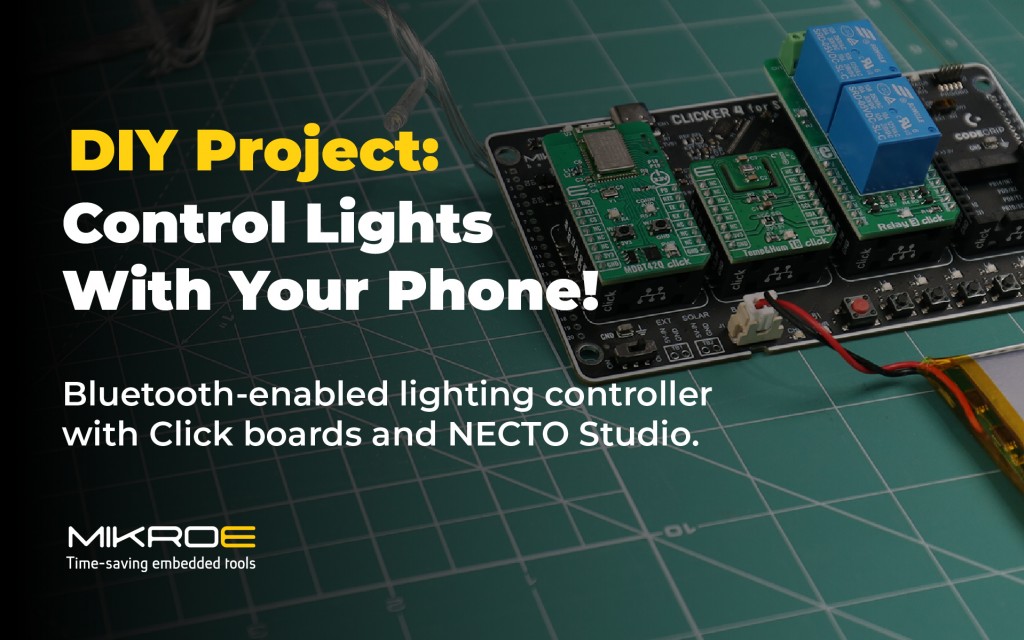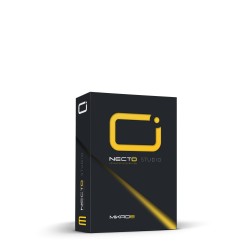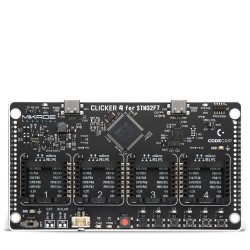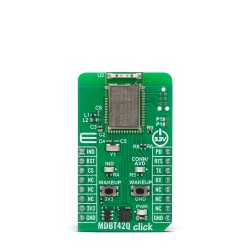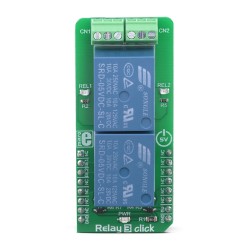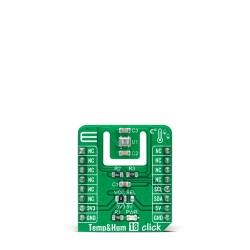Want to switch on your lights or any electric device - all from your smartphone?
With NECTO Studio and a few Click boards™, you can build a Bluetooth relay control system that brings smart home automation to life.
This project demonstrates how Bluetooth control meets automation - powered by STM32 and NECTO Studio.
Perfect for engineers, makers, and anyone exploring Bluetooth Relay Control and STM32 Home Automation concepts.
The Idea: Bluetooth Smart Light Control Made Easy
Our goal was simple: use Bluetooth communication to control a relay that switches lights (or any AC/DC load).
To make it smarter, we added temperature-based automation - when the temperature drops below 0°C, the lights switch on automatically.
This setup is ideal for:
- Smart home automation prototypes
- Industrial control systems
- IoT-based monitoring
- DIY embedded projects
Hardware Components Used
| Component | Description |
|---|---|
| Clicker 4 for STM32F7 | A compact development board powered by STM32F7 - ideal for running complex embedded applications. |
| MDBT42Q Click | A Bluetooth Low Energy module (nRF52810) that connects your phone to the Clicker board. |
| Relay 3 Click | Features two high-quality relays for switching loads like lights, motors, or appliances. |
| Temp & Hum 18 Click | Measures temperature and humidity, enabling environment-triggered automation. |
All boards are plug-and-play thanks to mikroBUS™ sockets - no soldering, just stack and code.
NECTO Studio: The Smart Development Environment
We used NECTO Studio - the all-in-one IDE designed for embedded engineers - to write, compile, and debug the firmware for this project.
NECTO Studio supports:
- Multiple MCU architectures (including STM32)
- 1850+ Click boards™ with pre-built libraries
- Easy debugging and code completion
You can even download NECTO Studio for free for non-commercial use and start your own home automation projects today.
How It Works: Bluetooth Meets Automation
- The Clicker 4 for STM32F7 runs firmware developed in NECTO Studio.
- MDBT42Q Click establishes a Bluetooth link with your smartphone.
- Commands from the phone toggle the Relay 3 Click, turning on/off a connected load (e.g., Christmas lights).
- The Temp & Hum 18 Click monitors ambient temperature - when it reaches 0°C, the relay automatically activates, lighting up your space.
This system can easily be customized for any IoT control scenario, from wireless lighting to temperature-triggered machinery.
Watch the Full Demo
Watch the full demonstration on our YouTube channel to see the entire setup in action.
Why Use NECTO for Smart Projects?
NECTO Studio isn’t just an IDE - it’s a complete embedded ecosystem that connects hardware, software, and innovation.
By combining:
- Click boards™ (hardware)
- NECTO Studio (software)
- EmbeddedWiki (knowledge base)
You can go from concept to prototype in hours, not days.
Get Started with Your Own Smart Home Project
- Download NECTO Studio and start coding
- Learn from EmbeddedWiki tutorials
- Explore 1850+ Click boards™ for sensors, connectivity, and control
Make your next embedded project wireless, automated, and smarter - with NECTO Studio and MIKROE Click boards™.
Featured Hardware
ABOUT NECTO
NECTO Studio is a complete, cross-platform IDE for embedded applications providing everything necessary to start developing and prototyping, including Click board™ applications and GUIs for embedded devices. Rapid software development is easily achieved as developers do not need to consider low-level code, freeing them up to focus on the application logic itself. Switching MCUs or even entire platforms requires no redevelopment - simply change the board definition file, recompile, and your application runs perfectly.
ABOUT MIKROE
MIKROE is committed to changing the embedded electronics industry through the use of time-saving industry-standard hardware and software solutions. With unique concepts like Remote Access, One New Product/Day, Multi-Architectural IDE and most recently, the EmbeddedWiki™ platform with more than million ready-for-use projects, MIKROE combines its dev boards, compilers, smart displays, programmers/debuggers and 1850+ Click peripheral boards to dramatically cut development time. mikroBUS™; mikroSDK™; SiBRAIN™ and DISCON™ are open standards and mikroBUS only has been adopted by over 100 leading microcontroller companies and integrated on their development boards.
Your MIKROE











